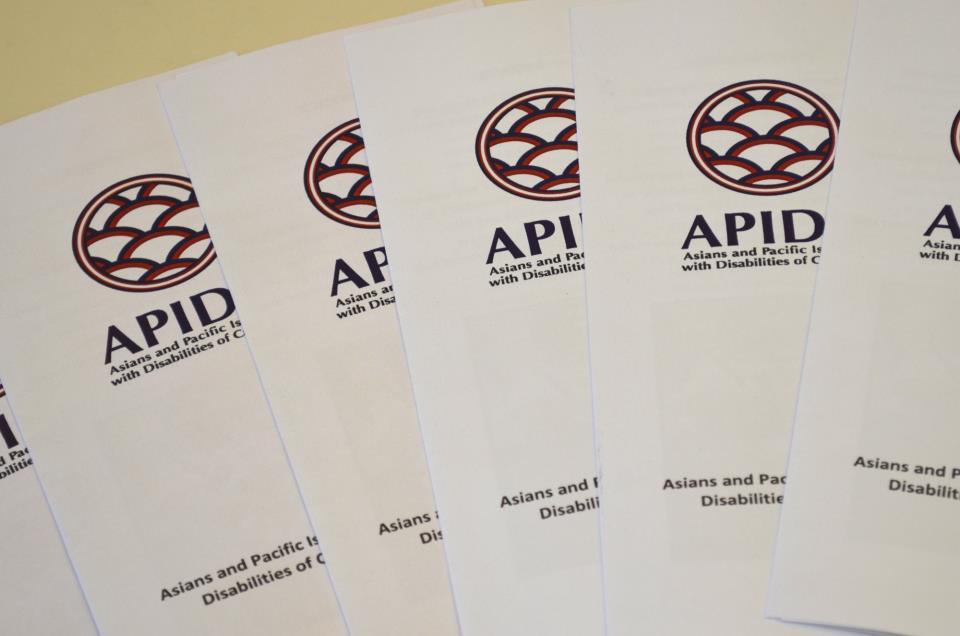
The U.S. Census estimated in 2000 that as many as 20% — or 1 in 5 — of Asian American & Pacific Islanders (AAPI) are living with some form of chronic disability, a number that may only have increased in the subsequent 14 years since this report was published. While the rates of AAPIs with disabilities mirror rates in the national population, rarely are AAPIs with disabilities visible either in AAPI advocacy or in disability rights advocacy.
Asian & Pacific Islanders with Disabilities of California (APIDC) has roots as a grassroots California advocacy group that received federal non-profit status in 2008, and it remains the country’s only disability rights and education non-profit focused on the Asian American disabled community. According to Jean Lin, Outreach Coordinator for APIDC, APIDC originated in 1998 through the work of community activist and employment attorney Patty Kanaga. According to Lin, Kanaga, who was serving at the time on a committee appointed by the California Governor’s committee to address the employment of disabled persons, organized the state’s first conference to address the AAPI community with disabilities “after she realized that AAPI with disabilities are not addressed in any way”.
Lin traces her own involvement with APIDC to that first conference in 1998; she first attended the conference as a participant. Later she stayed in touch with Kanaga, and after several years, were able to organize a second conference jointly. In 2008, APIDC received its federal non-profit status after holding three state-wide conferences on Asian Americans with disabilities. APIDC further received seed money from the Kellogg Foundation, and received further support from the Asian & Pacific Islander Health Forum, to facilitate the foundation of APIDC. “We are fortunate for them,” says Lin. “We are focused primarily as an educational and research organization, and we also provide aid to the AAPI community regarding disability issues.”
And, for APIDC, education and awareness of issues surrounding disability rights is the key to combat the ongoing cultural stigma within the AAPI community towards the disabled. Recounts Lin, “When a family member has a disability, our parents or grandparents might automatically assume we have done something horrible in the past and we are being punished for it. I remember when I was young, my godparents and grandparents actually blamed my mom for the reason why I have cerebral palsy, because when she was a young lady she loved eating beef jerky. They thought I was born with cerebral palsy because my mom ate too much beef. Nowadays, of course, we know that’s not true, but these ideas remain in our culture.”
Indeed, while attitudes are slowly changing, fear and intolerance towards the disabled still remains critically high within some Asian and Asian American cultures; notably, in one city in Southern China, the majority of babies abandoned in state-run safe zones suffer from cerebral palsy or some other form of congenital disease.
Lin also points out that within the disabled community, AAPIs are also marginalized. “We are treated inadequately within the AAPI community because, of course, having a disability is seen as being helpless… and people are uncomfortable around you. And within the disability community, people see AAPIs with disabilities as being shy. The disability community is predominantly White middle-class people with disabilities who are loud and opinionated, and who know how to fight for their equal rights.” Lin goes on to suggest that stereotypes of the soft-spoken Asian American remain pervasive in the mainstream disability rights advocacy groups.
Yet, says Lin, these stereotypes are clearly untrue. “I have met so many AAPIs with disabilities who are powerful and who do fabulous work in the community, and who are doing work at the intersection of disabilities and race.”
Lin is optimistic however that the work by groups like APIDC to educate both the disability rights community and the AAPI community on AAPI disability rights is changing attitudes. “I want to believe our future generations will come to see people with disabilities as empowered people, and not people to pity.”
“The disabled community and the AAPI community need to reach out to one another,” says Lin. “We are working for the same goals, and yet we don’t know who the hell we are to each other, if you know what I mean. We both have the same goals. We are both fighting for equal justice and equal opportunities for our communities. But, we unfortunately still don’t know each other.”
To learn more about APIDC and to contribute to the fight to improve the visibility of AAPIs with disabilities, please check out APIDC’s Facebook page or follow them on Twitter (@APIDC).
